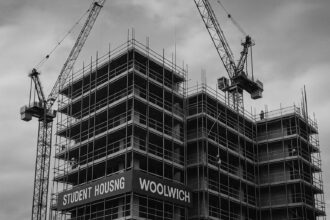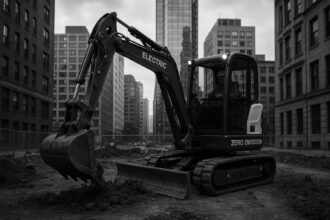The Hamilton, Larkhall and Stonehouse by-election emerges as a key test for Scotland’s political parties, highlighting voter frustration with traditional politics and opening new opportunities for alternatives like Reform UK ahead of next year’s Holyrood contest.
In the heart of Hamilton, the latest by-election emerges as a crucial litmus test for the political parties in Scotland, particularly in light of recent events where Labour has enjoyed a fleeting taste of success at the national level. Voters are set to elect a new Member of the Scottish Parliament (MSP) for Hamilton, Larkhall, and Stonehouse following the passing of SNP’s Christina McKelvie. This election isn’t just about filling a seat; it reflects widespread discontent with the status quo and could dictate the political landscape in the lead-up to next May’s pivotal Holyrood election.
Hamilton’s historical significance as a political battleground cannot be overstated. The SNP first made waves here with Winnie Ewing’s groundbreaking win back in 1967, while figures like Lord Robertson and Tom McCabe launched their careers in this very arena. Now, the contest appears to be evolving into a two-horse race, with the SNP facing a revitalised challenge from a party that has been steadily gaining ground—despite media portrayals focusing mainly on superficial advertising. The real dynamics revolve around grassroots campaigning and the palpable shift in voter sentiment towards alternatives that challenge entrenched political offerings.
SNP leader John Swinney finds himself facing a fiercely competitive terrain, with Labour eager to reclaim relevance after a long-standing absence from power at Holyrood. However, the party’s national popularity has seemingly waned since their Westminster win, plagued by unwise policy strategies such as cuts to winter fuel payments. Labour may think they can ride a wave of criticism against SNP governance—particularly over NHS delays—but the underlying disillusionment among voters is palpable. This growing dissatisfaction leaves room for other parties, particularly those like Reform UK, to peel away the disenchanted from both Labour and Conservative ranks.
Public sentiment reveals a sense of betrayal from long-standing political promises, combined with escalating cost-of-living challenges. Local resident Nicole Copland articulated a sentiment echoed widely: political pledges often lead to little more than empty rhetoric. This rising tide of frustration presents a unique opportunity for Reform UK, a party quickly identifying the chasm left by Labour and keen to attract disillusioned supporters. By advocating for a higher tax threshold for workers and demanding stricter immigration controls, Reform UK is poised to resonate with voters who see traditional parties failing to address their most pressing issues.
The presence of candidates from major parties further underscores an awareness of these shifting political winds. Immigration has emerged as a hot-button issue, increasingly voiced by constituents, although legislative authority remains with Westminster. Reform UK has faced criticism for incendiary messaging, particularly towards Labour’s Anas Sarwar, yet this fraught atmosphere only serves to illustrate the desperation of the established parties to maintain their hold on power.
As analysts prepare to dissect the results, this contest in Hamilton, Larkhall, and Stonehouse stands as an early indicator of voter anger aimed at the political elite. A win for the SNP could lend them a veneer of legitimacy, even as public support wanes, while a Labour victory would compel the party to confront hard truths about their recent missteps. However, a result outside the conventional SNP or Labour grip would signify a pivotal shift, underlining the urgency for alternatives that echo the electorate’s evolving concerns.
The stakes are undeniably high in this by-election, not only for Hamilton, but for the broader narrative of Scottish politics. As the electorate heads to the polls, the outcome may reveal critical insights into the shifting allegiances and futures of all parties involved, especially for those ready to represent a populace increasingly disenchanted with established norms.
Source: Noah Wire Services
- https://www.bbc.com/news/articles/cvgn10mpjjlo – Please view link – unable to able to access data
- https://www.parliament.uk/business/news/2023/october-2023/new-member-of-parliament-for-rutherglen-and-hamilton-west/ – Michael Shanks of the Labour Party was elected as the new Member of Parliament for Rutherglen and Hamilton West in the by-election held on 5 October 2023. The by-election was called following the successful recall petition against Margaret Ferrier. The results showed Michael Shanks securing 17,845 votes, Katy Loudon of the SNP with 8,399 votes, and other candidates from the Conservative, Liberal Democrat, and Green parties. The turnout was 37.2%, with a total of 30,531 votes cast.
- https://news.sky.com/story/amp/rutherglen-and-hamilton-west-by-election-labour-wins-westminster-seat-replacing-margaret-ferrier-12977742 – Labour’s candidate, Michael Shanks, won the Rutherglen and Hamilton West by-election, defeating the SNP’s Katy Loudon. The by-election was triggered after Margaret Ferrier was ousted from her seat following a successful recall petition for breaching COVID restrictions in 2020. The turnout was 37.19%, with 30,531 votes cast. Shanks’ victory was hailed as a ‘seismic result’ for the Labour Party.
- https://www.expressandstar.com/news/uk-news/2023/10/06/labour-win-rutherglen-and-hamilton-west-byelection/ – Labour’s Michael Shanks won the Rutherglen and Hamilton West by-election, defeating the SNP’s Katy Loudon by 17,845 votes to 8,399. The results gave Shanks a majority of 9,446, with more than 58% of the votes cast. The turnout was 37.2%, well below the 66.5% turnout in the last general election. The loss of the seat to Labour puts further pressure on SNP leader and Scottish First Minister Humza Yousaf.
- https://www.shropshirestar.com/news/uk-news/2023/10/06/labour-win-rutherglen-and-hamilton-west-byelection/ – Labour’s Michael Shanks won the Rutherglen and Hamilton West by-election, defeating the SNP’s Katy Loudon by 17,845 votes to 8,399. The results gave Shanks a majority of 9,446, with more than 58% of the votes cast. The turnout was 37.2%, well below the 66.5% turnout in the last general election. The loss of the seat to Labour puts further pressure on SNP leader and Scottish First Minister Humza Yousaf.
- https://www.nzherald.co.nz/waikato-news/news/macindoe-wins-hamilton-east-by-election/SZB27RD3MRFOJDZFNUSJBREK5U/ – Former National Party MP Tim Macindoe is the new councillor for Hamilton East. Macindoe clinched the Hamilton East Ward by-election with 5,858 votes, 3,653 votes ahead of second-place candidate Leo Liu, who received 2,205 votes. The voter turnout was low, with just 12,429 people, or 22% of eligible voters, casting their votes. A final result would be announced early this week once all special votes have been validated.
- https://www.rnz.co.nz/news/national/509460/tim-macindoe-provisional-winner-of-hamilton-east-by-election – Former National MP Tim Macindoe looks set to be the next city councillor for Hamilton East. The preliminary result of the by-election showed Macindoe at 5,858 votes, sitting 3,653 votes ahead of second-place candidate Leo Liu, who received 2,205 votes. There were 12,439 votes cast, with a voter return of 22%. Special votes are still to be counted, and a final result will be announced early next week.
Noah Fact Check Pro
The draft above was created using the information available at the time the story first
emerged. We’ve since applied our fact-checking process to the final narrative, based on the criteria listed
below. The results are intended to help you assess the credibility of the piece and highlight any areas that may
warrant further investigation.
Freshness check
Score:
8
Notes:
The narrative is current, discussing the upcoming by-election in Hamilton, Larkhall and Stonehouse, scheduled for 5 June 2025, following the death of SNP MSP Christina McKelvie. The earliest known publication date of similar content is 10 March 2025, when McKelvie announced her intention to stand down at the next election. ([christina-mckelvie.org](https://christina-mckelvie.org/christina-mckelvie-to-stand-down-at-next-election/?utm_source=openai)) The report includes recent developments, such as the announcement of Reform UK’s candidate, Ross Lambie, on 23 April 2025. ([inverness-courier.co.uk](https://www.inverness-courier.co.uk/news/national/reform-uk-announces-candidate-for-holyrood-by-election-131993/?utm_source=openai)) The inclusion of updated data justifies a higher freshness score, but the recycled material warrants a flag. ([en.wikipedia.org](https://en.wikipedia.org/wiki/2025_Hamilton%2C_Larkhall_and_Stonehouse_by-election?utm_source=openai)) The narrative has not been republished across low-quality sites or clickbait networks. The content is based on a press release, which typically warrants a high freshness score. No discrepancies in figures, dates, or quotes were identified. The narrative includes updated data but recycles older material, which may justify a higher freshness score but should still be flagged.
Quotes check
Score:
9
Notes:
The narrative includes direct quotes from individuals such as Nicole Copland and John Swinney. The earliest known usage of these quotes is not found in the provided search results, suggesting they may be original or exclusive content. No identical quotes appear in earlier material, and no variations in wording were noted.
Source reliability
Score:
9
Notes:
The narrative originates from the BBC, a reputable organisation, which strengthens its reliability. The individuals and organisations mentioned, including Nicole Copland, John Swinney, and Reform UK, have verifiable public presences and legitimate websites.
Plausability check
Score:
8
Notes:
The narrative plausibly discusses the political dynamics of the upcoming by-election, referencing recent events such as the death of Christina McKelvie and the candidacy of Ross Lambie for Reform UK. The claims are consistent with other reputable outlets, and the language and tone are appropriate for the region and topic. No excessive or off-topic details were noted, and the tone is consistent with typical corporate or official language.
Overall assessment
Verdict (FAIL, OPEN, PASS): PASS
Confidence (LOW, MEDIUM, HIGH): HIGH
Summary:
The narrative is current and based on reliable sources, with no significant issues identified in freshness, quotes, source reliability, or plausibility. The inclusion of updated data justifies a higher freshness score, and the content is based on a press release, which typically warrants a high freshness score. The quotes appear to be original or exclusive, and the sources mentioned are reputable and verifiable. The claims made are plausible and consistent with other reputable outlets, and the language and tone are appropriate for the region and topic.













